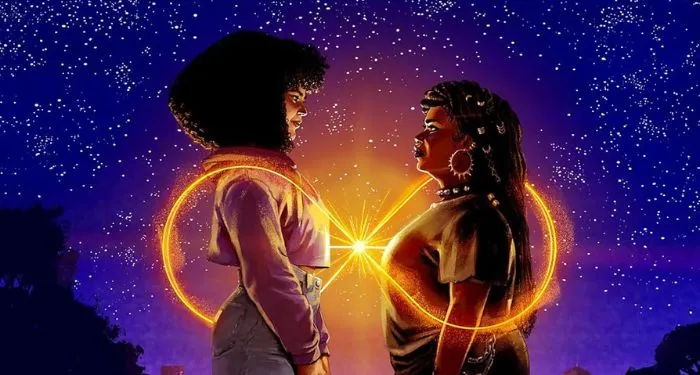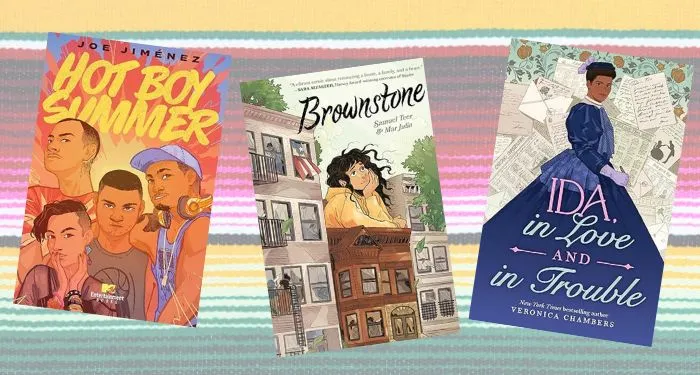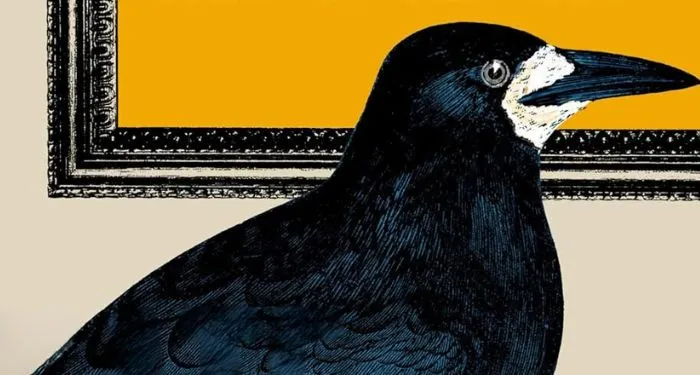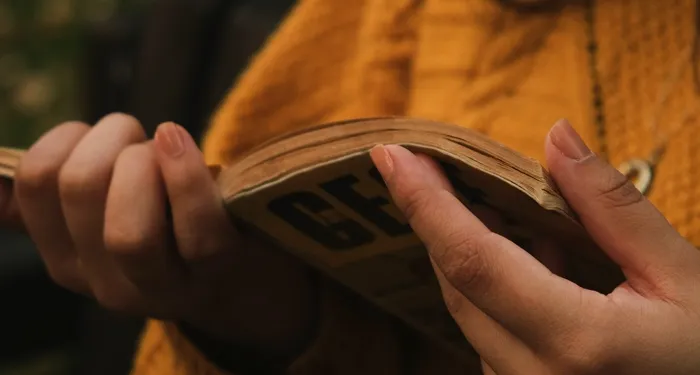A dispatch from our Art Editor on the art and illustrations in the Review’s September 19 and October 3 issues.
Newsletter twenty-four comes to you from my living room bookshelves, where I’ve been reorganizing my library. This has led me to reconsider some of my favorites, find books I thought I’d lost, and appreciate cover designs anew. I love painting type, so I’ve made little letter studies of some of my favorite book covers.
Our Fall Books issue was the biggest of the year, necessitating twice as many original commissions by illustrators and artists.
Julien Posture’s hand-drawn cover, composed in panels of strawberry, chocolate, and vanilla colors, felt like a farewell to summer and a welcome to the business of fall. I spoke to him about his cover and his research work in an interview published last week.
For Anahid Nersessian’s review of Rachel Kushner’s latest novel, Creation Lake, I asked the Brazilian-born cartoonist and illustrator Laura Lannes for a portrait. Lannes turned in a precise and gorgeous drawing of Kushner, backdropped by a windmill. The designer and educator Paul Sahre read Ben Tarnoff’s essay on tech and Trump and delivered a bitmapped, pixelated campaign yard sign.
We needed a portrait of Joseph O’Neill for Laura Marsh’s review of Godwin, his latest novel. Our managing editor had mentioned that she liked Edel Rodriguez’s work, so he was on my mind as I read the piece. He turned in several sketches, and we opted for a soccer-themed one. For Regina Marler’s essay about Francine Prose’s recent memoir, I asked Joana Avillez, who is particularly gifted at drawing portraits of women. Her young, purple-bespectacled Prose, glancing back over her shoulder, was perfect for the piece.
Fintan O’Toole’s essay on Kamala Harris’s candidacy had me beeline to Tom Bachtell, who turned in a Harris/Walz podium scene, foreshadowing Harris’s strong performance in the first presidential debates (which O’Toole also wrote about for us). I was glad to get a chance to assign a portrait of Ed Park, who is one of our frequent contributors, for Charlie Lee’s review of his second novel, and I thought the characterful environments that Sophia Martineck brings to her portraits would work for a novel that Lee called “exuberant.”
I looked up images of Rikki Ducornet before I wrote to Maya Chessman to ask if she might do another portrait for us to accompany Marina Warner’s consideration of Ducornet’s novels, poems, and short stories. This is something I usually do, to get a sense of whose style might best illuminate the space between the review writer and the subject.
For Ian Frazier’s review of Language City: The Fight to Preserve Endangered Mother Tongues in New York, I found a 2019 piece made from maps by the French artists and designer Jochen Gerner, and for Elaine Blair’s review of Lexi Freiman’s satire The Book of Ayn, I e-mailed Fanny Blanc, also a French illustrator, who I’ve been wanting to work with for a long time. She drew a wonderful portrait of a seated Freiman with a falcon perched on her windowsill. I immediately thought Lorenzo Gritti’s minimal elegance would be right for Rumaan Alam’s review of Victor LaValle’s eerie historical novel Lone Women. Gritti delivered a deadpan LaValle set against a night sky and a lonely log cabin.
For Lola Seaton’s review of Megan Nolan’s Ordinary Human Failings, I asked Charlotte Trounce, who last painted for us a portrait of the Ukrainian writer and artist Yevgenia Belorusets.
Daniel Salmieri wrote me out of the blue with his portfolio and sketchbooks. The confident line in his illustrations made me think he’d have some good ideas for series art. He sent four possible directions, and I picked the strangest one.
The October 3 issue, with Elizabeth Kolbert’s essay about sentient plants, gave me a chance to put some nature on the cover. I’ve been a fan of the British artist Lauri Hopkins and her cut-paper assemblages for a long time. After trying a few of her pieces in the cover template, we decided on a green collage titled Bump (2024) for its simple, minimal shape. For Kolbert’s piece inside, we found a painting of milkweed by the Canadian artist Margaux Williamson.
John Broadley illustrated Kathryn Hughes’s review of a collection of women’s diaries, giving us a sweet quartet of women scribes in his inky style. I thought John Brooks might enjoy Alice Kaplan’s look at Michel Leiris’s memoirs, and despite just finishing a cross-country move while also delivering work for two shows (not to mention a solo show coming this October), John took on the assignment. A number of photographers came to mind for Matthew Desmond’s review of White Poverty: How Exposing Myths About Race and Class Can Reconstruct American Democracy by Reverend Dr. William J. Barber IIand Jonathan Wilson-Hartgrove. Jason Fulford, a chronicler of the rust belt and quotidian America at large, sent us a selection of images he thought might suit the essay, and we picked a grid of four.
The New York–based illustrator Grant Shaffer mentioned that he was traveling to England the last time I asked him to do a portrait, so when I read Christoper de Bellaigue’s review of Scott Preston’s novel The Borrowed Hills, which is set in the Lake District, I asked Shaffer again, hoping he had returned and could take this one on. He had and could and so gave us a handsome blue portrait of Preston.
For Tareq Baconi’s review of two memoirs by Palestinian writers, Raja Shehadeh and Fida Jiryis, we asked Ciara Quilty-Harper for a double portrait. She connected the two images with the landscape, writing: “I like the idea of having a continuous background behind the two authors as a way to represent the shared struggle; a long winding road through the landscape, hills in the distance and rubble in the foreground.”
“Swimmers, 2024,” the series art in the issue, is by the Indian writer and journalist Amitava Kumar whose ink is as fluent in images as it is in words.




























 English (US) ·
English (US) ·